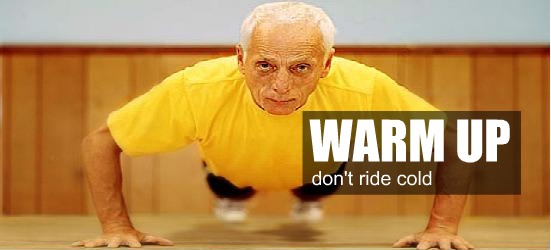
So you’re all ready for your outdoor cardio? Wait a minute – or may I suggest five to ten, and warm up. Warming up before your running routine is so helpful to wake up those muscles and open your joints before an intense cardio session or workout.
You might be familiar with the static stretches done before a football match, but what I’m talking about here is a dynamic warm-up, which really benefits you by helping to prevent injury. Static stretches are fine as long as you complete them with dynamic mobility ones.
Here’s why: A proper warm up before high-intensity running will enhance your performance and also reduce muscle damage that occurs during the run.
There are two components to a good warm up: general and specific. A general warm up elevates the core body temperature and lubricates the muscles, allowing them to contract and relax more efficiently. A specific warm up increases neuromuscular activation, preparing the muscles to fire in the specific way they will be asked to do in the workout.
It’s simple. All you have to do is plan for it and incorporate warming up in your routine. Clear your mind, assume your posture, tighten your muscles, take a deep breath and go.
A general warm up is basically a slow run. Start by speed walking for a few minutes or jogging lightly in place until you feel your heart pumping. This is a must, even if you’re planning to do a light jog. If you’re just going for a power/speed walk, start off at a lower pace until you feel warmed up enough to level up the pace to your desire .
Now you’re warmed up enough for specific, dynamic exercises that move the involved joints. These exercises include lunges, walking lunges, jumping jacks, jogging in place with high knees and side-to-side leg swings. Perform each one of those exercises for 30 seconds and you’re ready to go. You can still do the static stretches you’re used to, but only after your body is warmed enough to avoid injury.
It sounds simple, but these warm ups are very important for your posture during the run, minimizing muscle cramps and soreness the next day.
But that’s not enough to avoid soreness!
You might be familiar with the warming up process and its importance, but cooling down is just as important and we almost always skip it and rush for that bottle of water .
The main purpose of the cooling down phase is to bring your heart rate, body temperature and breathing back to the pre-workout state, redistributing the blood flow and washing away the lactic acid produced during a workout, which is the main cause of muscle soreness.
If you’re finding that no matter how much you warm-up and cool down, you’re still cramping up and getting sore muscles then you should look for a supplement that can help prevent this (I recommend propionyl l-carnitine). You should still carry out the same routine but it’ll be less painful if you find something that can help you.
Just as we did in the warm up , slow down for at least five minutes to a walking pace and walk for a couple of minutes. Now is the time to do your static stretches for the major muscles, especially your quads, glutes and calf muscles. Perform each for at least 30 seconds while breathing.
Now that you know how important it is to incorporate a warm up and a cooling down as part of your workout routine, get out there and do it! Ready, set, go!


